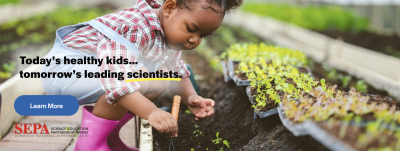Food-based Science, Technology, Engineering, Arts, and Mathematics (STEAM) Learning Activities May Reduce Decline in Preschoolers’ Skin Carotenoids Status

Abstract
Objective
To assess the effectiveness of food-based science, technology, engineering, arts, and mathematics (STEAM) learning activities on preschoolers’ liking of 9 target vegetables and objectively-assessed fruit and vegetable (FV) intake.
Methods
Seven hands-on, food-based STEAM learning activities were implemented to expose children to 9 target vegetables in 3 Head Start preschools (11 classrooms) across North Carolina. Child-reported vegetable liking scores and skin carotenoid status (SCS) were dependent variables collected at baseline, midpoint, and posttest. Adjusted repeated-measures ANOVA was used to examine intervention impact.
Results
A total of 113 children (intervention = 49; comparison = 64) participated. Children were an average age of 3.7 ± 0.57 years at baseline. Mean target vegetable liking scores for the intervention and comparison groups, respectively, were 3.2 ± 0.19 and 3.2 ± 0.17 at baseline, 2.9 ± 0.17 and 3.1 ± 0.15 at midpoint, and 2.8 ± 0.15 and 3.1 ± 0.13 at posttest. A time × group interaction was not significant for target vegetable liking scores. Mean SCS were 268.6 ± 13.24 and 270.9 ± 12.13 at baseline, 271.3 ± 12.50 and 275.6 ± 11.46 at midpoint, and 267.8 ± 11.26 and 229.6 ± 10.32 at posttest for the intervention and comparison groups, respectively. A time × group interaction was significant for SCS (F1,77 = 3.98; P = 0.02; r = 0.10). Both groups declined from baseline to posttest (intervention = 0.06%; comparison = 15.09%), which occurred after winter break, with a smaller decline observed in the intervention group (P = 0.02).
Conclusions and Implications
Food-based STEAM learning activities may present a unique opportunity to affect FV intake while meeting academic standards. More research is needed to understand how liking for familiar FV changes over time and its relationship with consumption. In addition, more implementation research featuring larger sample sizes, teachers as the interventionist, and a longer study duration is needed to confirm the outcomes of food-based STEAM learning observed in the current study and the long-term impact this approach may have on children’s’ dietary quality.







